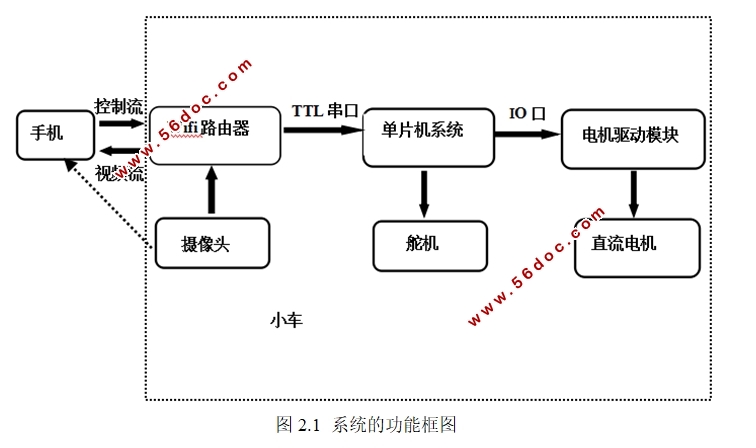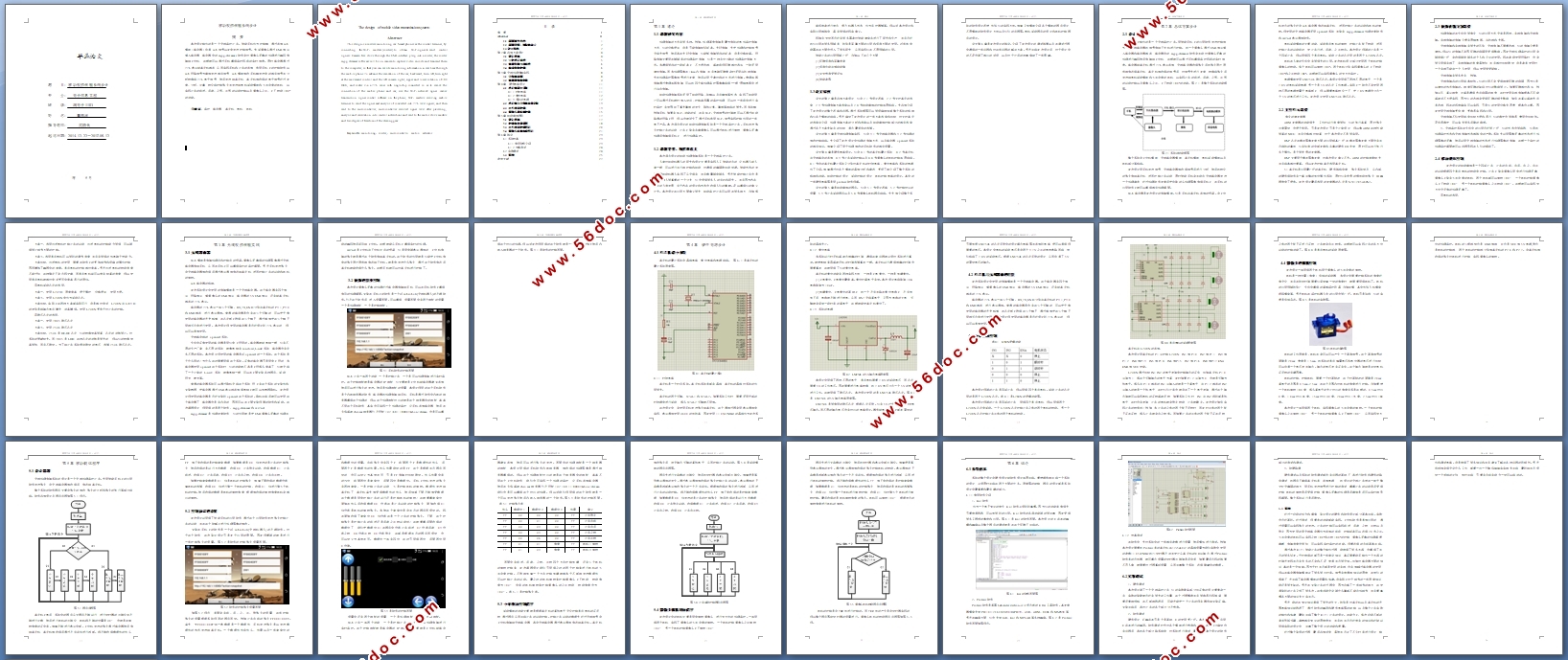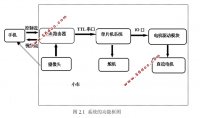移动视频传输系统设计
来源:56doc.com 资料编号:5D27846 资料等级:★★★★★ %E8%B5%84%E6%96%99%E7%BC%96%E5%8F%B7%EF%BC%9A5D27846
资料以网页介绍的为准,下载后不会有水印.资料仅供学习参考之用. 密 保 惠 帮助
资料介绍
移动视频传输系统设计(开题报告,论文12000字)
摘 要
本次设计制作的是一个无线监控小车。智能手机作为控制端,通过连接wifi模块(路由器)获得wifi信号以此来发送控制信号。免驱摄像头通过USB接口插入路由器,路由器中的mjpg-streamer软件会对摄像头采集的视频进行编码传输给上位机,这样就可以通过手机看到监控现场的实时信息。同时路由器通过TTL串口跟单片机相连,从而实现手机和小车的连接,利用手机上的控制软件以wifi网络信号为载体发送相关信号,wifi模块接收手机端发送来的相关信号并分析转换成TTL电平信号,然后发送给单片机,单片机接收到的电平信号经过处理、分析、计算,转化成控制指令并发送给电机驱动模块和二自由度的舵机,以实现小车的前进、后退、左拐、右拐的运动控制以及摄像头左右、上下转动180°的功能。
关键词:监控 路由器 单片机 电机 舵机
The design of mobile video transmission system
Abstract
This design is a wireless monitoring car. Smart phones as the control terminal, by connecting the WiFi module (routers) to obtain WiFi signal to send control signals. Camera free drive through the USB interface plug into a router, the router mjpg streamer software will be on camera to capture video encode and transmit them to the computer, so that you can see site monitoring information in real time through the mobile phone. To advance the realization of the car, backward, turn left, turn right at the movement control and the left camera right, upper and lower rotation of 180 DEG, and router via a TTL serial with single-chip connected so as to realize the connection of the mobile phone and car, use the WiFi network signal carrier transmission signal control software on the phone, WiFi module receiving mobile terminal to send the signal and analysis of converted into TTL level signals, and then sent to the microcontroller, microcontroller received signal level after processing, analysis and calculation into control instructions and sent to the motor drive module and two degree of freedom of the steering gear.
Keywords: monitoring;router,;microcontrolle; motor; actuator


目 录
摘 要 I
Abstract II
第1章 绪论 1
1.1 课题研究内容 1
1.2 课题背景、现状和意义 1
1.3论文结构 2
第2章 总体方案设计 4
2.1 设计思路 4
2.2 主控单元选型 5
2.3 视频传输方案选型 6
2.4 移动载体控制 6
第3章 无线视频传输实现 8
3.1 无线路由器 8
3.2 视频的接收控制 9
第4章 硬件电路设计 11
4.1 单片机最小系统 11
4.1.1 时钟电路 11
4.1.2 复位电路 12
4.1.3 系统的电源 12
4.2 单片机与无线路由的连接 13
4.3 小车驱动控制 13
4.4 摄像头的舵机控制 15
第5章 移动载体程序 17
5.1 设计思路 17
5.2 控制协议的设置 18
5.3 小车驱动控制程序 20
5.4 摄像头舵机转动程序 21
第6章 结论 23
6.1系统仿真 23
6.1.1常用软件介绍 23
6.1.2 仿真测试 24
6.2实物调试 24
6.3 展望 25
参考文献 27
|





